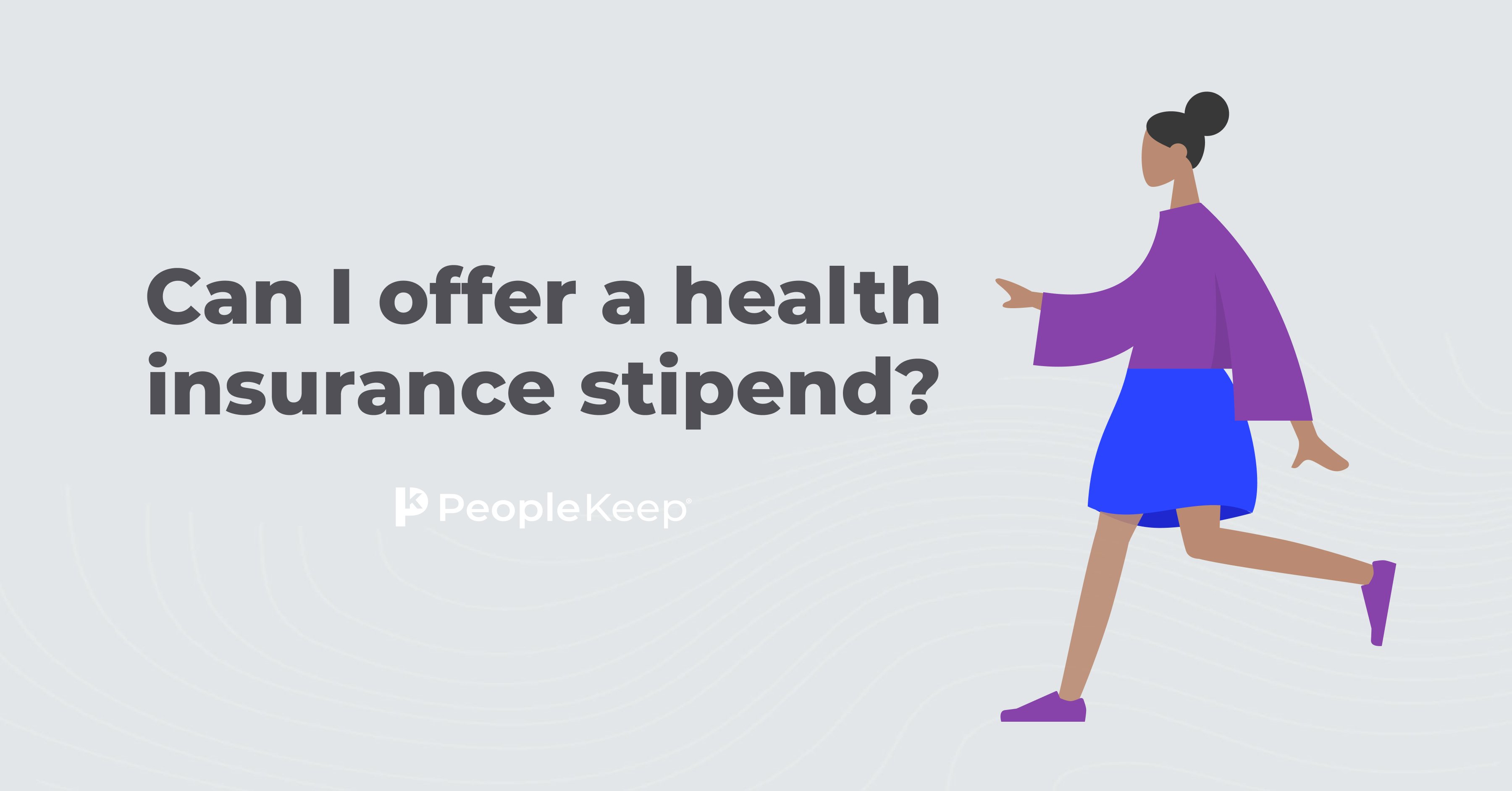How to maintain a work-life balance
By Elizabeth Walker on August 5, 2024 at 11:00 AM
Juggling several responsibilities inside and outside the workplace can be a challenge for employees and employers. Despite the popularity of keeping a good work-life balance, some employees need additional help finding the proper stability between their professional lives and personal time.
Creating and maintaining a healthy work-life balance isn’t easy. Dozens of factors come into play, including family life, friends, work deadlines, societal pressures, and income. That’s why understanding the ins and outs of what makes good work-life balance is vital to its success.
This article will explain work-life balance, why it’s essential, and how to maintain a healthy balance.
Takeaways from this blog post:
- Work-life balance is crucial for maintaining a healthy work environment and avoiding employee burnout.
- Employers can support these efforts by understanding individual employee needs and implementing policies that promote work-life balance.
- Offering paid time off, remote work, flexible schedules, and personalized benefits are effective ways to support employees in achieving work-life balance.
What is a work-life balance?
Work-life balance is the achievement of spending equal time on someone’s professional and personal life. Essentially, it’s when employees prioritize their career and personal relationships equally without adversely affecting their physical or mental health.
With the rise of technology and remote work, the boundaries between work and life can become blurred. Therefore, setting boundaries is vital to be successful at work and productive at home.
Work and life shouldn’t be at odds. Your work and personal lives must work together to ensure a strong balance that enhances your physical and mental well-being.
This can look different depending on your workers' age and industry. For example, Baby Boomers tend to value work stability, while Gen Xers are more likely to use paid time off (PTO) for family enrichment and relationships. Many Millennials and Gen Zers focus more on finding meaningful work that integrates with their lifestyles, so a specific focus on work-life balance isn’t as necessary.
Why is work-life balance important?
Ensuring your employees can find the perfect balance between work and life is essential for establishing a healthy work environment. An unhealthy work-life balance where employees are overworked can lead to chronic stress. This can cause other physical and mental health issues, such as depression and heart problems.
A poor balance can also affect work-related outcomes, such as employee burnout, which reduces overall productivity at your organization. According to a recent report, organizations lose $322 billion in turnover and unproductivity globally due to burnout1.
On the other hand, a good balance can lead to positive effects such as reduced work-related stress levels, better well-being, and a decreased risk of burnout.
According to the OECD Better Life Index, full-time workers in the U.S. spend 63% of their time on personal care activities, such as eating, sleeping, and leisure2. This equates to 15 hours daily, less than other OECD countries such as Italy, Germany, Canada, South Korea, Russia, France, and Brazil.
By striking a better balance between work and life, workers with children can focus on family, and all employees can work toward improved personal health and leisure.
How can employees maintain a healthy work-life balance?
Employees can avoid a poor work-life balance in several ways. While employers have control over the staff schedule and work arrangements, employees can improve their work-life balance using other methods.
Here are a few steps employees can take to maintain a healthy work-life balance:
- Prioritize your health
- Make time for yourself and your family
- Set boundaries and a maximum number of work hours per week
- Set achievable goals
- Set priorities to maintain a quality of life
Suppose an employee works eight hours daily, takes an hour each for lunch break and commuting, and sleeps for eight hours. In that case, they’d still have six hours of quality time each day to spend with family, do a leisure activity, or care for their health. By setting extra time aside in their busy schedule, they can better balance work and life.
Employees shouldn’t be afraid to use their PTO and sick leave either. According to the Pew Research Center, 46% of U.S. employees take less time off than their benefits package allows. While the reasons vary, 49% say they worry about falling behind with work due to time off, and 43% don’t want their teammates taking on more work on their behalf.
Prioritizing their health will make them happier and more productive at work, more than making up for any missed sick days.
How can employers better support these efforts?
Employers can advocate for change to create a more effective work-life balance, improving employee productivity and morale.
First, you’ll need to understand your employees' needs and wants to determine the best way to improve their work-life balance. Your workers are unique, meaning they’ll have different priorities that may not fit into their specific generation’s typical way of life.
We’ve compiled a few tips for supporting your entire team to provide you with a starting point.
Set realistic expectations for your employees
One of the first things you should consider is your expectations for your employees. How long will their shifts be? Will you provide a meal break or any other regular breaks throughout the day? Do they need to be on call?
If your employees work long hours, they’ll struggle to find an ideal work-life balance, which will affect their job satisfaction and morale.
Limiting the hours you expect an employee to work and providing ample breaks is one way to avoid burnout. You can also allow your employees to take a break and focus on their personal lives and family relationships.
Employees need time to recharge after working long hours. If your workers are always on call, they won’t have a chance to relax. If you need to have employees on call, consider an on-call schedule that gives workers a regular break on rotation. You may also want to establish a maximum limit for on-call hours or days.
Offer paid time off
One of the best ways to support your employees is to offer PTO. Unlike traditional vacation time and sick leave, workers can use their PTO for any reason, including mental health days. This allows employees to take a break, get things done at home, and have family time.
According to Forbes, the average U.S. worker takes 17 days off per year, while individuals with unlimited PTO take an average of 10 days off4. There’s no federal law requiring employers to provide their staff with PTO. However, choosing to do so at your company is an excellent way to stay competitive in the job market, improve employee satisfaction, and showcase your company's culture.
Offer remote work or a flexible work schedule
Another way to promote a better work-life balance is through remote work and flexible hours, like a 9/80 work schedule. While working from home can blend work and personal life, sometimes resulting in work-family conflict, it can also benefit you and your employees.
In a remote environment, your workers don’t need to commute. This saves them time and money, allowing them to spend more time on the things they love the most. It might also allow your employees to sleep in compared to getting up for a rush-hour commute, helping to improve their overall health and well-being.
Remote work and flex time also allow working parents to be home with their kids, saving them money and daily stress on childcare.
Lastly, flexible work arrangements allow your workers to work whenever is best for them. This could be after their kids head off to school or between appointments throughout the day, contributing to a solid work-life balance.
Lead by example
Leading by example is a commonly overlooked way for employers to support employees in establishing a work-life balance. If you tend to work long hours, send emails late at night, and always be available, your employees will pick up on this. They may feel obligated to do the same.
Ensure you take some time for yourself as well. After all, a recent report found that 70% of small business owners experience burnout at least once a month, with 27% saying they feel burnt out once a week or more5. So, it’s crucial to care for yourself to continue running your business and managing your staff effectively.
Provide personalized employee benefits
Offering personalized benefits is another way to support your employees’ work-life balance. With personalized benefits, you empower your workers to use their benefits however they want. Instead of relying on traditional benefits that offer one-size-fits-all benefits to your team, customized benefits allow you to provide an individualized experience.
Personalized health benefits
Individualized health benefits such as health reimbursement arrangements (HRAs) allow you to reimburse your employees for their qualifying medical expenses. Depending on the HRA you offer, you can reimburse employees for premiums paid toward the individual health insurance policies they choose. You can even reimburse for their out-of-pocket medical expenses, too.
Three of the most popular types of HRAs are:
- The qualified small employer HRA (QSEHRA): QSEHRAs are for organizations with fewer than 50 full-time equivalent employees (FTEs) that don’t offer a group plan. Employees purchase their own policies, and employers reimburse them for monthly premiums and out-of-pocket expenses. QSEHRAs have annual maximum contribution limits but no minimum limits.
- The individual coverage HRA (ICHRA): ICHRAs work for organizations of all sizes and have no minimum or maximum contribution limits. ICHRAs are customizable, so employers can offer different allowance amounts based on employee classes and choose the eligible expenses for reimbursement.
- The integrated HRA: Also known as a group coverage HRA (GCHRA), an integrated HRA is only for employers who offer a group health plan. With a GHCRA, employers supplement their existing group policy by allowing for reimbursement for out-of-pocket costs the employees’ group plan doesn’t fully cover. Integrated HRAs have no minimum or maximum contribution limits and allow for customization based on employee classes.
You can also offer your workers a health stipend. This works similarly to an HRA, except it’s taxable for you and your employees. While HRAs often work best for most organizations, stipends can be a better solution for 1099 contractors and international workers. If you have employees who receive advance premium tax credits (APTC), a health stipend allows them to continue receiving their credits without compliance issues.
Wellness benefits
Instead of or in addition to establishing a corporate wellness program, you can offer your employees a wellness stipend. This enables you to contribute funds toward employees’ wellness expenses, such as gym memberships, wearable fitness devices, home exercise equipment, wellness mobile apps, and other out-of-pocket costs up to your monthly allowance.
With a wellness stipend, you can enhance your employees' work-life balance by helping them have better financial access to health and wellness activities.
Education benefits
Offering perks that your employees can use to develop their personal and professional lives is a great way to give them balance. Education or professional development benefits help your workers expand or learn new skills they can use both in and outside the workplace.
They can help employees earn their degrees, GEDs, and professional certificates or learn other industry-specific skills. Because individuals can take many classes and certifications online these days, employees have the flexibility to learn at their own pace or even from home.
Commuter benefits
Commuter benefits, also known as transportation or employee transit benefits, help your employees manage the financial and time-consuming aspects of commuting to work daily. These benefits can help your employees have greater flexibility when commuting, which can significantly reduce workplace stress.
For example, if you have an employee who doesn’t have a car, offering commuter benefits allows them to use reliable transportation, such as a bus, train, or rideshare service, to take them to work and home on a schedule that works best for them.
Similarly, employees with a car appreciate mileage reimbursement, which helps them cover the costs of gas, routine maintenance, car insurance premiums, registration, and other expenses they may experience while driving their personal car for business purposes.
Conclusion
Maintaining a work-life balance is essential for preventing burnout and low morale. Employees with a good balance between work and life will be more productive, see improved mental and physical health, and spend more time with their families. When your employees are happier and healthier, they’re less likely to be absent from work due to illness and more likely to contribute toward a more positive company culture.
If you’re ready to offer employee benefits to help your workers maintain a work-life balance, PeopleKeep can help. Schedule a call with an HRA specialist to see how personalized health benefits can help your staff maintain a healthier work-life balance.
This blog article was originally published on May 4, 2015. It was last updated on August 5, 2024.
1. https://march8.com/articles/burnout-culture-what-is-it-costing-businesses
2. https://www.oecdbetterlifeindex.org/topics/work-life-balance/
4. https://www.forbes.com/advisor/business/pto-statistics/
5. https://info.walmartbusiness.com/rs/202-DWD-665/images/work-life-balance-report.pdf
Check out more resources
See these related articles

What can an HRA reimburse?
Wondering if your HRA can cover specific medical costs? Discover the comprehensive list of eligible expenses that your HRA can reimburse in this article.

What is healthcare reimbursement?
Looking to reimburse your employees for their healthcare expenses? Learn everything you need to know about healthcare reimbursement.

Can I offer a health insurance stipend?
Interested in offering a health stipend in lieu of health insurance? Learn how stipends work, their tax implications, as well as other tax-free options.



